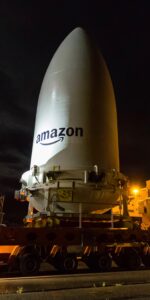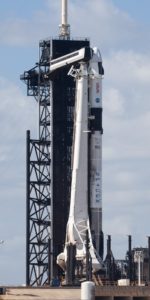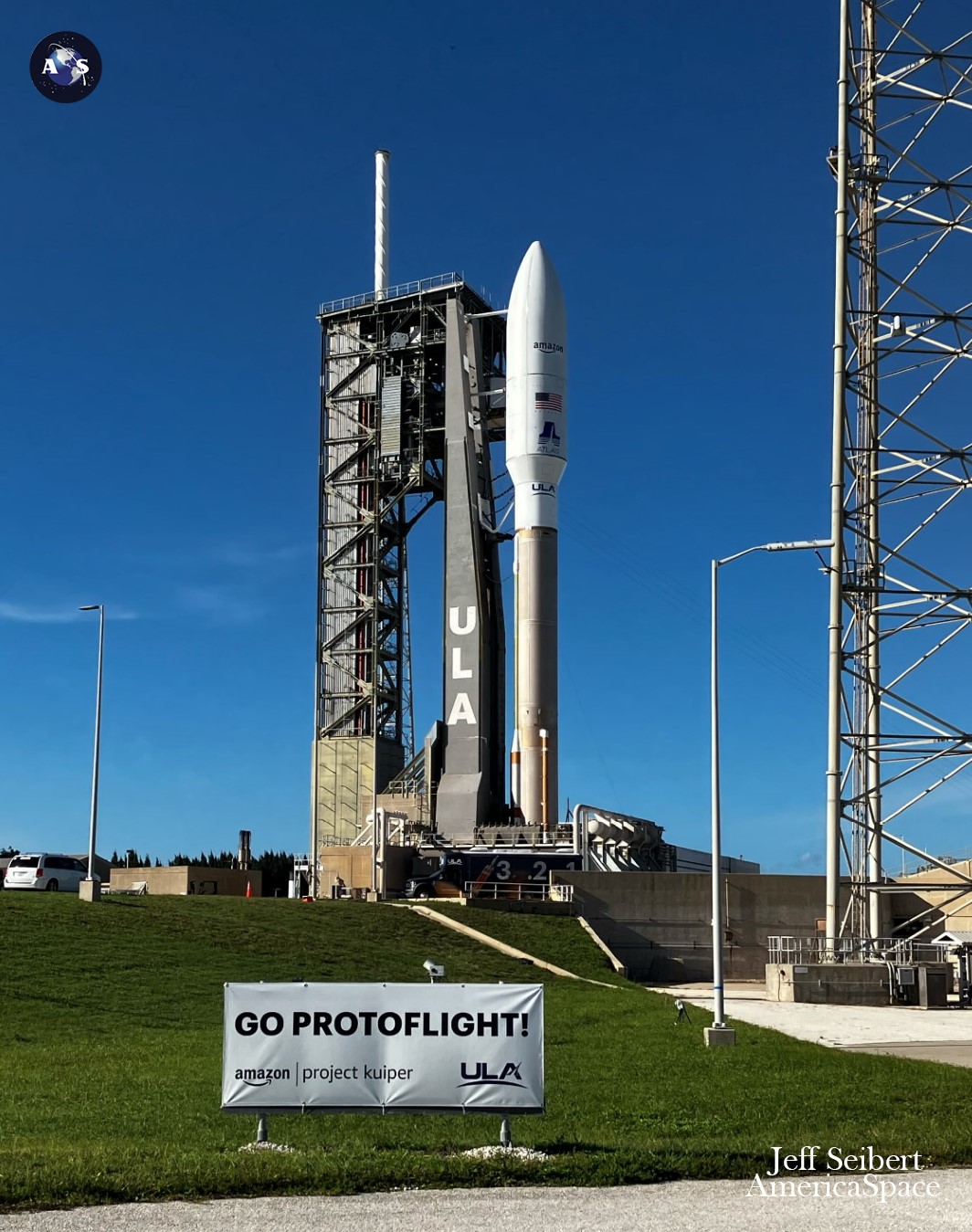
United Launch Alliance (ULA) is heading to close out one of its least-flown years on record, following Friday’s picture-perfect 2:06 p.m. EDT launch of a “Mighty Atlas” out of storied Space Launch Complex (SLC)-41 at Cape Canaveral Space Force Station, Fla. Aboard the powerful Atlas V booster—making its 99th outing and eighth in the “501” configuration, equipped with a 17.7-foot-diameter (5.4-meter) Short Payload Fairing (SPF), no strap-on boosters and a single-engine Centaur upper stage—were a prototype pair of satellites for Amazon’s in-development Project Kuiper broadband internet constellation.
Despite weather conditions originally looking around 85-percent-favorable, Thursday’s most recent update from the 45th Weather Squadron at Patrick Space Force Base lowered these chances to around 70 percent. “Isolated showers may approach the Spaceport Friday morning, but will begin to shift away in the afternoon, due to the change in the mid-level flow,” the 45th noted. “Our main concern for the primary launch window will now be Thick Cloud Layers Rule, with Probability of Violation (PoV) increasing throughout the window, due to rising moisture in the mid-levels ahead of an approaching front.”
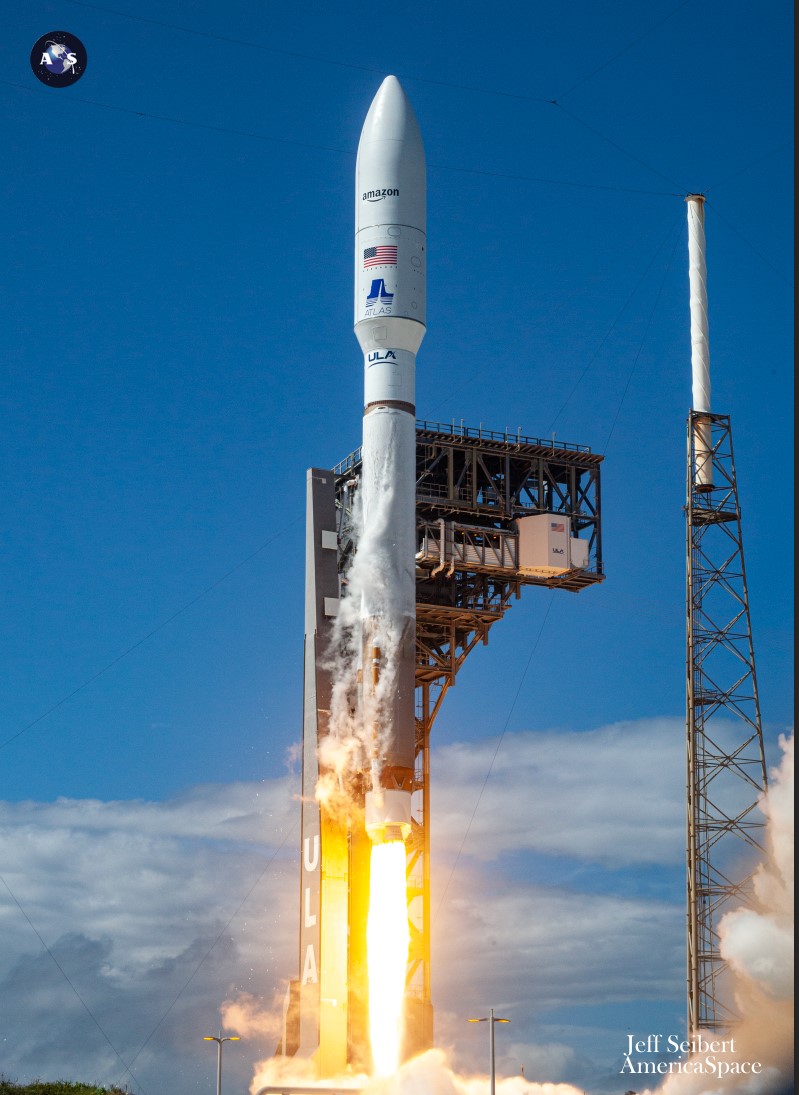
Photo Credit: Jeff Seibert/AmericaSpace
The mission benefitted from an expansive two-hour primary “window”, opening at 2 p.m. and closing at 4 p.m. Friday. As outlined in AmericaSpace’s preview story, the process of stacking the Atlas V—its Common Core Booster (CCB), Centaur upper stage and the payload fairing housing KuiperSat-1 and KuiperSat-2—got underway last month with the Launch Vehicle On Stand (LVOS) milestone. The payload was mounted atop the stack at the end of September, raising the height of the Mighty Atlas to 196 feet (59.7 meters).
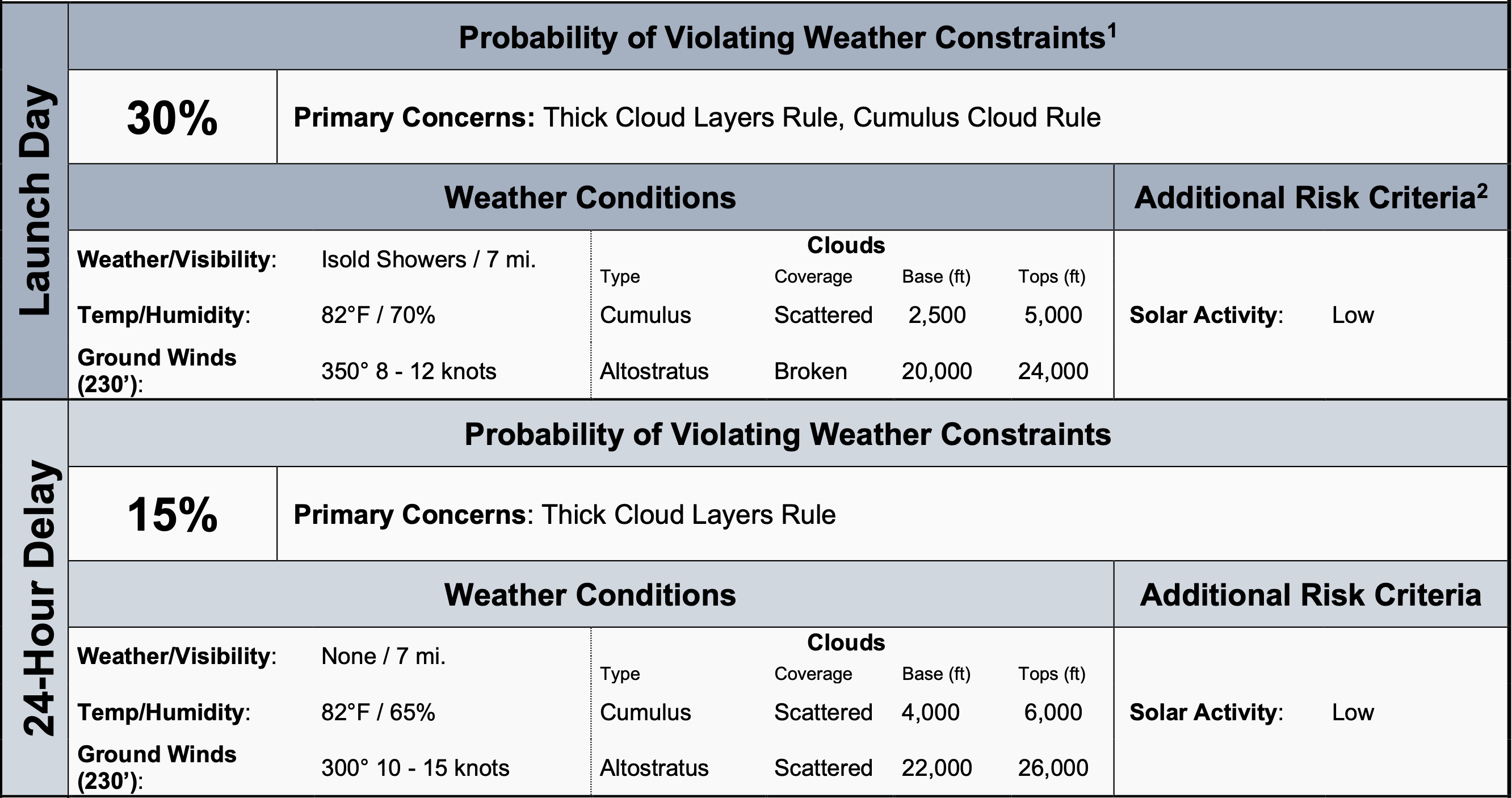
A Launch Readiness Review (LRR) on Wednesday, led by ULA Launch Director James Whelan, produced a definitive “Go” to proceed with Friday’s launch attempt and on Thursday the Atlas V was rolled the quarter-mile (400-meter) from the Vertical Integration Facility (VIF) to SLC-41’s pad surface. Storable rocket-grade kerosene (known as “RP-1”) had already been loaded into the giant booster, with cryogenic oxygen and hydrogen tanking occurring in the final hours ahead of liftoff.
A half-hour before the opening of the window, Mr. Whelan instructed the team to co-ordinate a new T-0 at 2:06 p.m. and a final readiness poll produced a “Go for Launch”. ULA’s third mission of 2023—and its second Atlas V of the year—went airborne with characteristic perfection, the dual nozzles of its RD-180 engine powering hot and hard for the opening 4.5 minutes of ascent. After this, the Centaur assumed control to lift the KuiperSat twins the rest of the way into their 311-mile-high (500-kilometer) orbit, inclined 30 degrees to the equator.
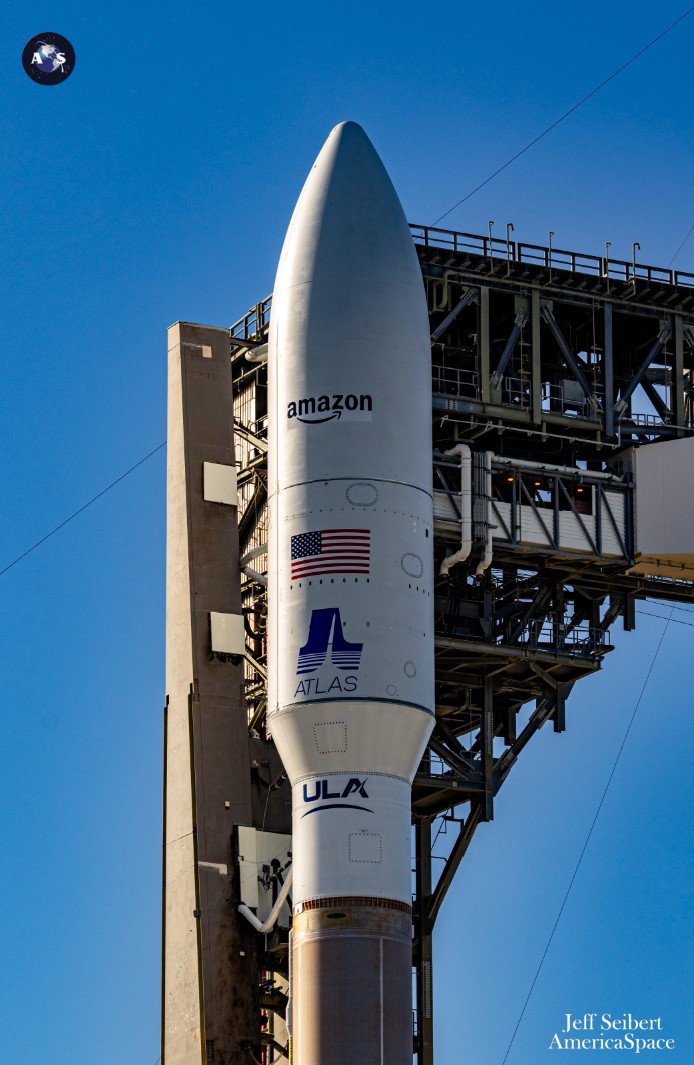
“This initial launch is the first step in support of deployment of Amazon’s initiative to provide fast, affordable broadband service to unserved and underserved communities around the world,” said Gary Wentz, ULA vice president of government and commercial programs. “We have worked diligently in partnership with the Project Kuiper team to launch this important mission that will help connect the world.”
Unveiled by Amazon in 2019, Project Kuiper—whose intended constellation size of 3,236 satellites alludes to the colossal Kuiper Belt of icy bodies in the outer Solar System—is intended to increase global high-speed, low-latency broadband access and help close the “digital divide”, particularly in underserved regions of the United States and worldwide. “We’re determined to make affordable broadband a reality for customers and communities around the world,” said Amazon founder Jeff Bezos.
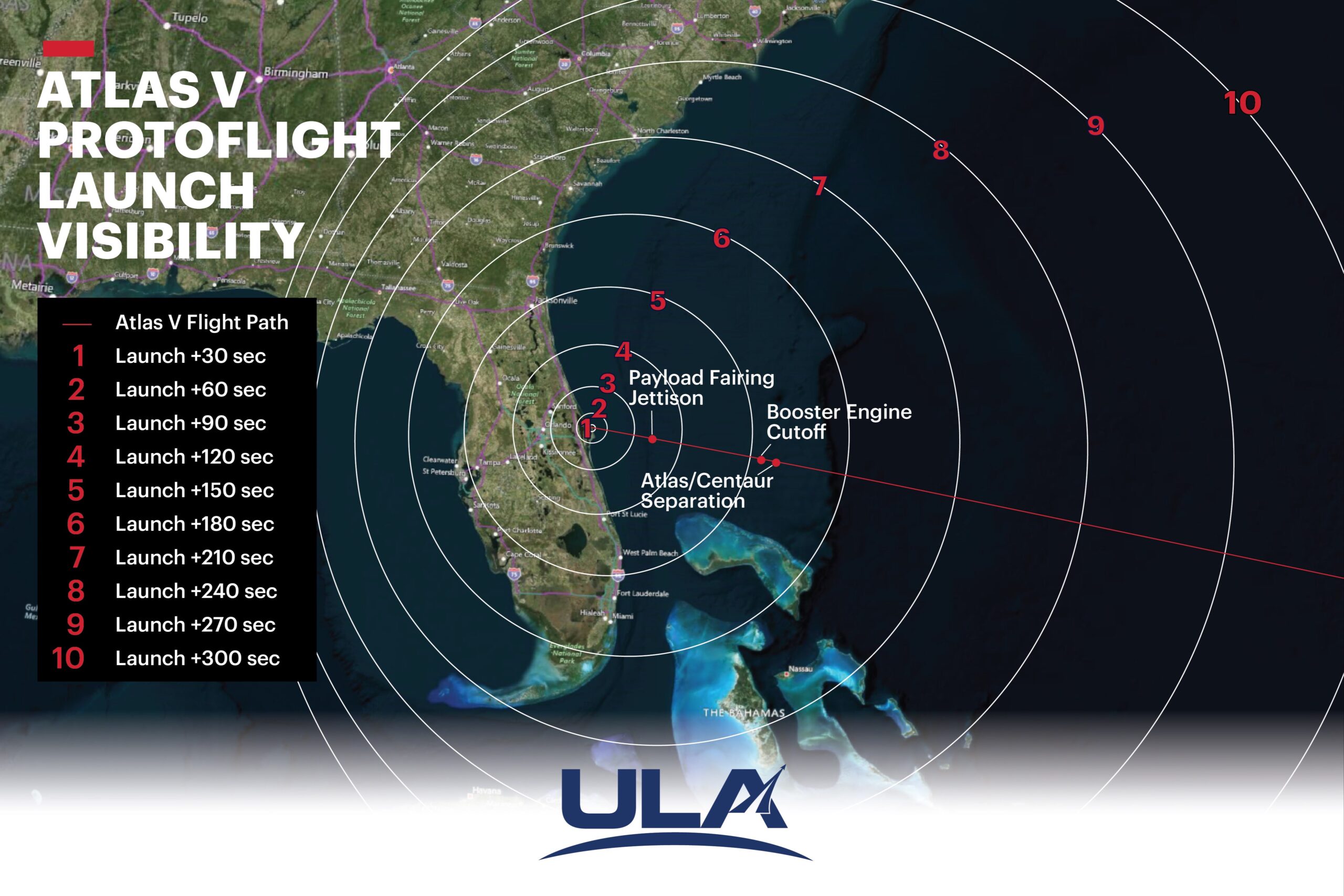
According to Amazon, Project Kuiper will serve a “wide range of customers”, including individual households, schools, hospitals, businesses, government agencies, disaster relief operations, mobile operators and organizations operating without reliable internet connectivity. The in-house system leverages Amazon’s global logistics and operations “footprint”, as well as Amazon Web Services (AWS) networking and infrastructure “to serve a diverse, global customer base”.
“We’ve designed our satellites and dispenser system to accommodate multiple launch vehicles,” said Project Kuiper’s vice president of technology, Rajeev Badyal. “This gives us the flexibility to use many different rockets and providers to launch our satellite system.”
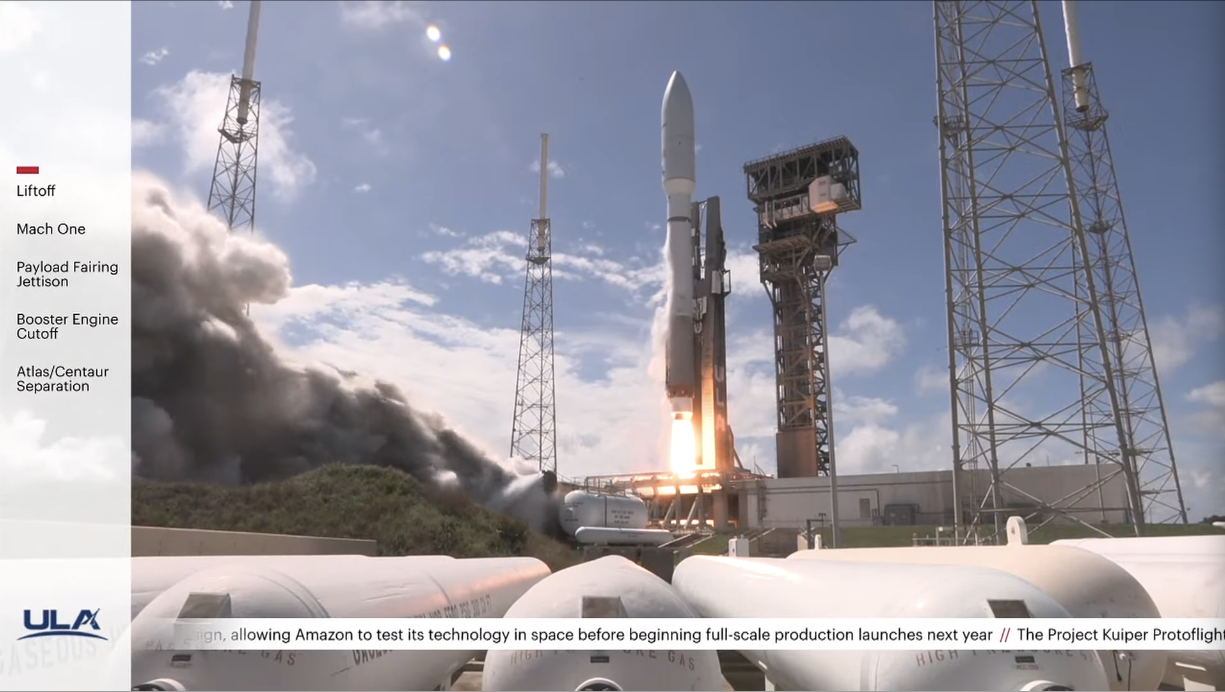
In October 2020, the Federal Communications Commission (FCC) voted unanimously to approve Project Kuiper. And over the following two years, Amazon unveiled designs for the satellites’ Ka-band phased-array antennas to be used in customer terminals, announced substantial investment in prototype manufacturing facilities in Redmond, Wash., and unveiled a trio of outdoor-mounted customer terminal designs.
Last year, Amazon signed the largest commercial launch-vehicle procurement contract in history for up to 83 launches over a five-year period. Key providers are ULA’s Vulcan-Centaur, Kent, Wash.-headquartered Blue Origin’s New Glenn and Europe’s Ariane 6, developed by Paris, France-based Arianespace.
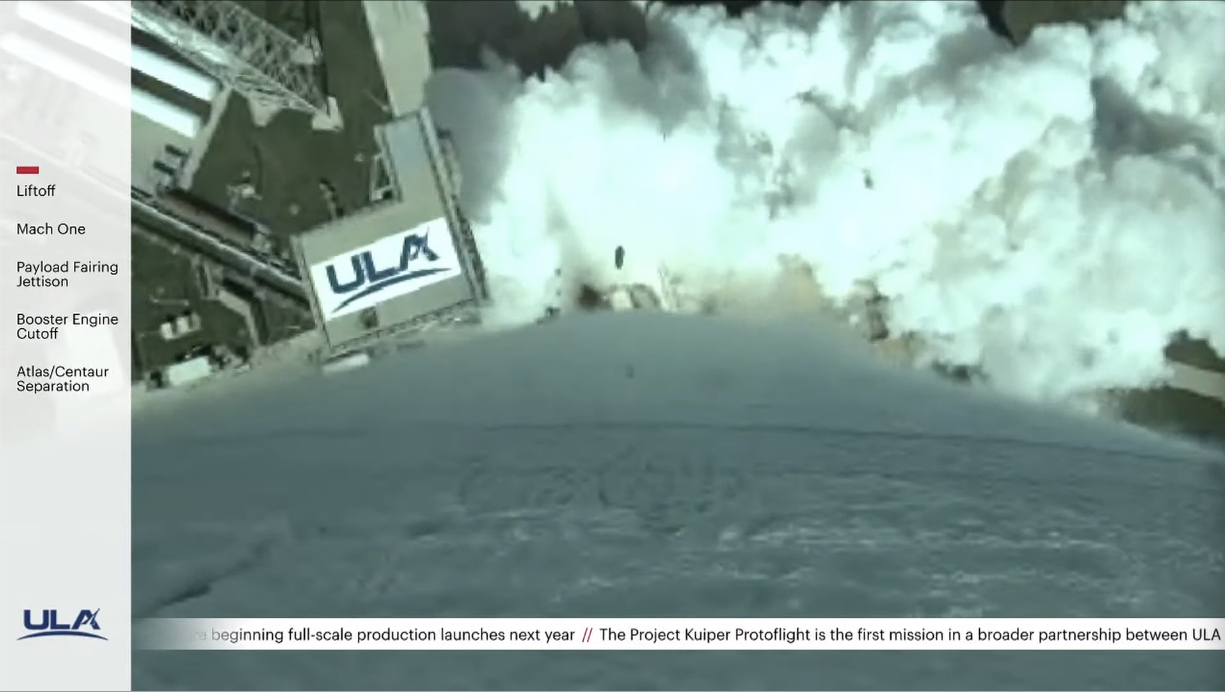
“Securing launch capacity from multiple providers has been a key part of our strategy from Day One,” said Badyal. “This approach reduces risk associated with launch vehicle stand-downs and supports competitive long-term pricing for Amazon. These large, heavy-lift rockets also mean we can deploy more of our constellation with fewer launches, helping simplify our launch and deployment schedule.”
Under the April 2022 contracts, Paris, France-based Arianespace will fly 18 missions in support of Project Kuiper, whilst Blue Origin will launch 12 times (with an option for 15 more) and ULA is tasked with 38 Vulcan-Centaur flights. It was noted that the ULA portion of the contract also covered “production and launch infrastructure to support a higher cadence of launches” from SLC-41, “including a new, dedicated version of the Vulcan Launch Platform (VLP)”.
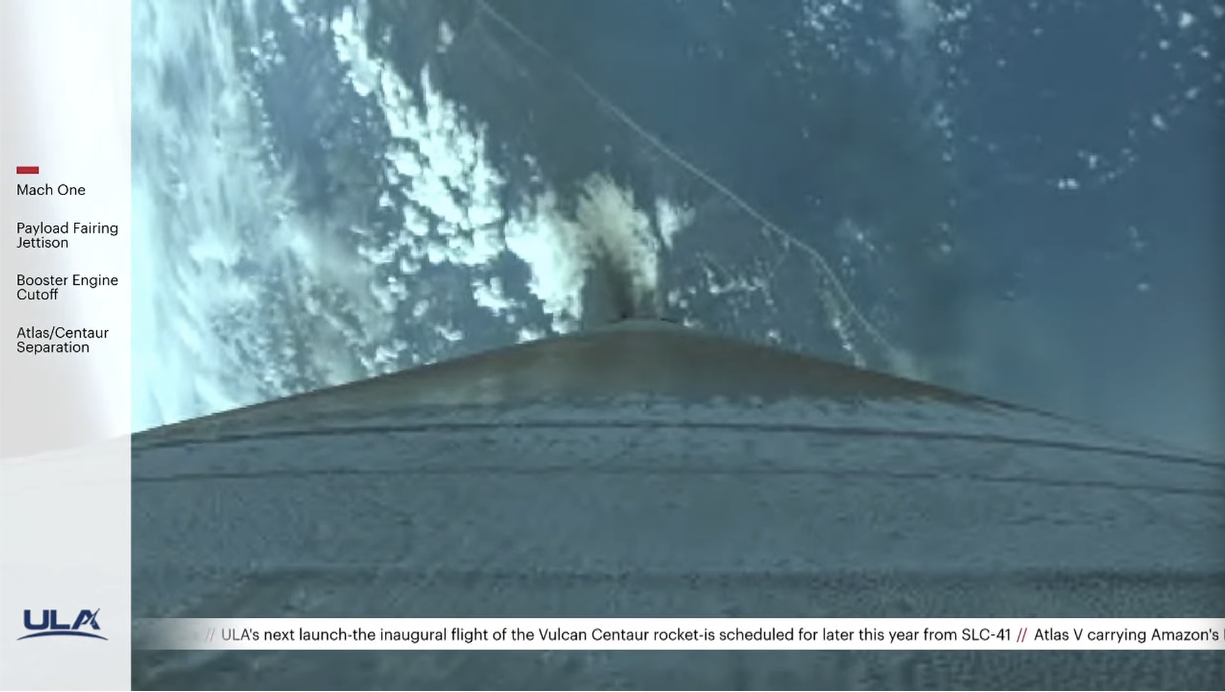
In support of Project Kuiper, ULA is also developing a second vehicle processing facility to create parallel “launch lanes” for these high-cadence operations. The 38 Vulcan-Centaur missions followed an April 2021 contract for nine Atlas V launches to deploy the initial members of Project Kuiper from SLC-41, bringing to 47 the total number of flights presently on ULA’s ticket.
In the aftermath of Friday’s launch, ULA noted that its next mission on the manifest will be the long-awaited maiden voyage of the Vulcan-Centaur heavylifter, which underwent a comprehensive Flight Readiness Firing (FRF) of its core stage back in June. That mission—carrying Astrobotic’s Peregrine lunar lander—currently has no definitive launch date, but is provisionally targeted for the final quarter of the year.
If Vulcan-Centaur indeed flies before the tolling of the New Year’s Eve bell, it will close out 2023 for ULA on four launches: two Atlas Vs last month and today and the second-to-last mission of the mammoth Delta IV Heavy in June. In addition to the KuiperSat twins, the NROL-68 and NROL-107 “Silent Barker” classified payloads have been successfully delivered to orbit on behalf of the National Reconnaissance Office. Four flights in a single calendar year represents ULA’s lightest since the organization opened its doors in December 2006.
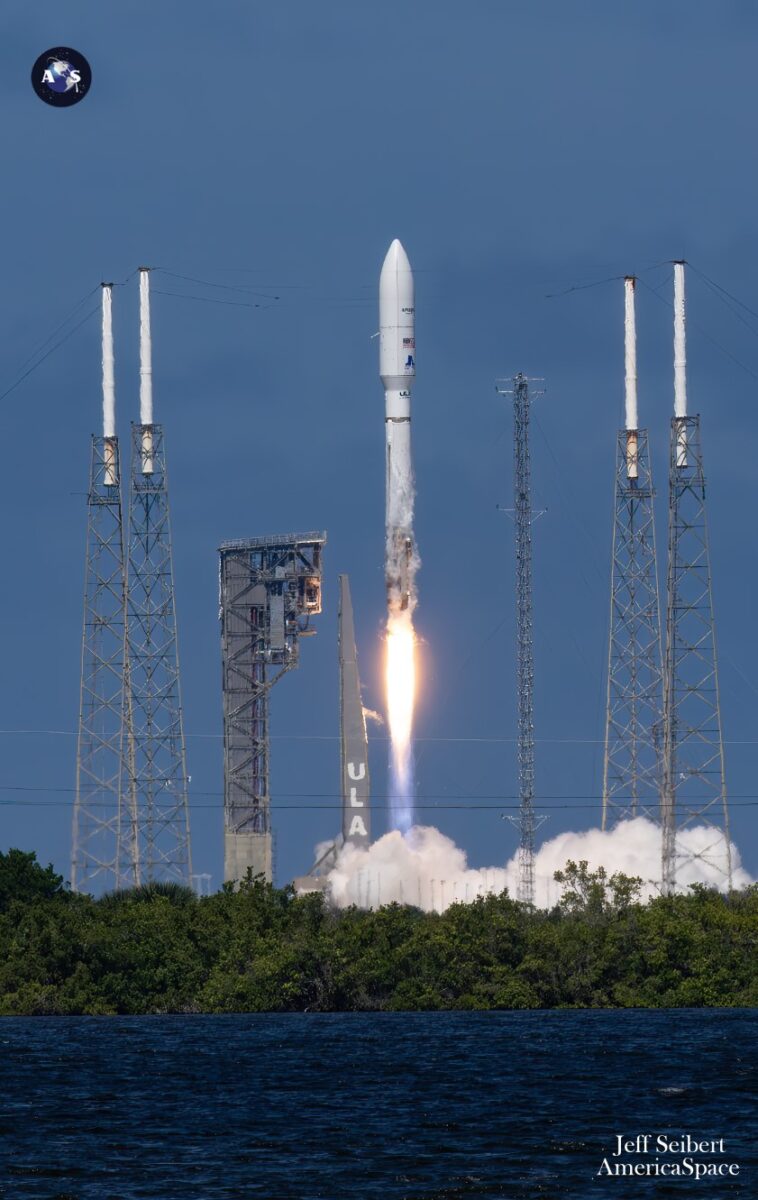
Photo credit: Jeff Seibert/AmericaSpace




